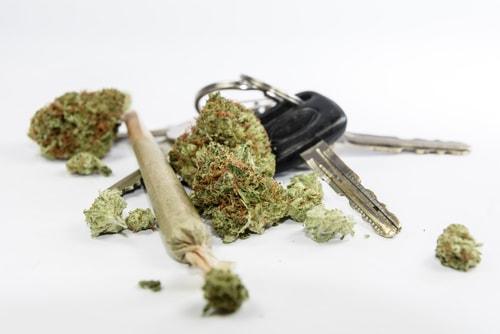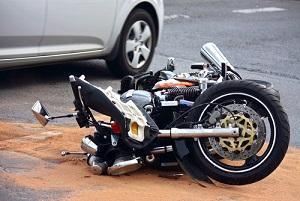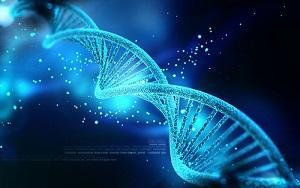Recent Blog Posts
Studies Link Legalized Marijuana to Increase in Car Accidents
 Voters in Massachusetts approved a referendum in 2016 to legalize the recreational use of marijuana in the commonwealth. It took more than two years, however, for lawmakers to come up with a structure and regulatory system that would allow for legal retail sales. Last week, the first retail stores finally opened with a great deal of fanfare. In fact, in the town of Northampton, the town’s mayor was the first in line to make a purchase at one of the new dispensaries.
Voters in Massachusetts approved a referendum in 2016 to legalize the recreational use of marijuana in the commonwealth. It took more than two years, however, for lawmakers to come up with a structure and regulatory system that would allow for legal retail sales. Last week, the first retail stores finally opened with a great deal of fanfare. In fact, in the town of Northampton, the town’s mayor was the first in line to make a purchase at one of the new dispensaries.
While the debate over recreational marijuana has largely focused on criminal laws—and the differences between laws at the state and federal levels—there are other important concerns as well. Two separate studies recently found a statistically significant increase in car accidents in states that have legalized recreational cannabis. Given the geographic proximity of Massachusetts to Connecticut, motorists in the Nutmeg State may have reasons to be worried.
Connecticut State Police Remind Residents That Marijuana is Still Illegal in the State
 The evolution of the public’s attitude toward marijuana over the last few decades has been an interesting phenomenon to witness. The use of the drug has been long associated with a particular lifestyle—and, largely, a certain type of person. While such stereotypes were often inaccurate and potentially discriminatory, they have started to fall away in recent years.
The evolution of the public’s attitude toward marijuana over the last few decades has been an interesting phenomenon to witness. The use of the drug has been long associated with a particular lifestyle—and, largely, a certain type of person. While such stereotypes were often inaccurate and potentially discriminatory, they have started to fall away in recent years.
Much of the change has come from the recognition that marijuana seems to have medicinal and palliative uses—so much so that 33 states have established legal, medical cannabis programs. In 10 states, however, it is legal for adults age 21 and over to purchase and use marijuana for recreational purposes. Among these states is our neighbor to the north, the Commonwealth of Massachusetts. As the sale of recreational marijuana begins in Massachusetts, law enforcement officials here in Connecticut are reminding citizens that the drug is still illegal in the Constitution State.
Two Connecticut Dog Bite Victims Recover Compensation in Separate Cases
 When a dog attacks and causes injury to a person, the owner of the dog is generally liable for those injuries under Connecticut law. The damages that the victim could collect depend on a number of factors, including the extent of his or her injuries and the effect those injuries have on the victims’ life. For example, a person who has been permanently scarred as the result of a dog bite might be entitled to collect more than an individual whose injuries healed completely in a matter of weeks. This idea can perhaps be best explained with real-world cases that were resolved recently right here in Connecticut.
When a dog attacks and causes injury to a person, the owner of the dog is generally liable for those injuries under Connecticut law. The damages that the victim could collect depend on a number of factors, including the extent of his or her injuries and the effect those injuries have on the victims’ life. For example, a person who has been permanently scarred as the result of a dog bite might be entitled to collect more than an individual whose injuries healed completely in a matter of weeks. This idea can perhaps be best explained with real-world cases that were resolved recently right here in Connecticut.
FedEx Driver Receives $160,000 Settlement
Delivery personnel, including those who work for the U.S. Postal Service and private companies like UPS and FedEx, encounter dogs virtually every day. In 2013, a FedEx driver was backing into a residential driveway in Thomaston when he was attacked and bitten by two pit bulls. According to the victim’s account, the attack continued for nearly two agonizing minutes. The man’s wounds were reportedly so deep that the staff at the hospital decided against stitching them up, opting to irrigate them instead to reduce the risk of infection.
Federal Court Ruling Highlights Complexity of Medical Marijuana Issue
 Imagine a scenario in which you are applying for a job. You pass the interview stage with flying colors, and the hiring manager is ready to bring you on immediately. The only thing you have left to do is pass a pre-employment drug screening. You are not worried because everything you currently take has been prescribed by a doctor who is licensed to practice in your state. When the screening results come back, however, they show that you have a particular drug in your system—one that you even told your prospective employer about beforehand. As a result of the test, your job offer is rescinded. Sounds pretty unfair, does it not? This is exactly what happened to a Connecticut woman in a situation that shows just how far we have left to go as our country tries to figure out exactly how to handle medical marijuana.
Imagine a scenario in which you are applying for a job. You pass the interview stage with flying colors, and the hiring manager is ready to bring you on immediately. The only thing you have left to do is pass a pre-employment drug screening. You are not worried because everything you currently take has been prescribed by a doctor who is licensed to practice in your state. When the screening results come back, however, they show that you have a particular drug in your system—one that you even told your prospective employer about beforehand. As a result of the test, your job offer is rescinded. Sounds pretty unfair, does it not? This is exactly what happened to a Connecticut woman in a situation that shows just how far we have left to go as our country tries to figure out exactly how to handle medical marijuana.
A Quick Background
In 2016, a woman was recruited and applied to work at a nursing home and rehabilitation center in Niantic, Connecticut. The woman’s interviews went well, and she was offered the position of Activities Manager pursuant to a pre-employment drug test. Prior to the screening, she informed the hiring manager that she was a registered patient under Connecticut’s Palliative Use of Marijuana Act (PUMA)—the state’s legal medical marijuana program. She had been in an accident in 2012 and was currently using a prescribed pill form of marijuana at night to help with post-traumatic stress disorder (PTSD) symptoms.
Motorcycle Rider Awarded $130,000 for Hit and Run Accident Involving a Mystery Driver
 When you are involved in a hit and run accident, it can be extremely difficult to collect compensation for the damages you incur. If those damages include bodily injury, you are likely to face even greater challenges. It is possible, however, to recover compensation for your injuries after a hit and run accident, as a case out of Waterbury, Connecticut recently demonstrated.
When you are involved in a hit and run accident, it can be extremely difficult to collect compensation for the damages you incur. If those damages include bodily injury, you are likely to face even greater challenges. It is possible, however, to recover compensation for your injuries after a hit and run accident, as a case out of Waterbury, Connecticut recently demonstrated.
The Accident in Question
The crash took place in August 2016 at an intersection in Waterbury. A 44-year-old man was riding his motorcycle when he was struck by a Toyota—knocking him to the ground and causing injuries to the rider’s back and right leg. According to court documents, the driver of the Toyota stopped briefly and then fled the scene.
A subsequent investigation into the crash determined that the driver of the Toyota was not the owner of the vehicle. In fact, the owner claimed she had no idea who would have been driving her car that day. She had reportedly left the car with an acquaintance for repairs, but an attorney for the plaintiff said that the owner’s account "was very sketchy." The driver of the vehicle was never positively identified for the purposes of this case. The Toyota owner’s insurance policy through State Farm paid out $20,000, but the payment fell far short of the losses that the rider had incurred.
Concern Growing Over Law Enforcement Collection of DNA from Juveniles
 Under the current law in Connecticut, anyone who is convicted of a felony is required to provide a sample of his or her DNA to be cataloged in the state’s DNA database. In 2016, the Connecticut Supreme Court even ruled that prison and law enforcement officials were permitted to use reasonable force to obtain the DNA sample when a convict refuses to cooperate.
Under the current law in Connecticut, anyone who is convicted of a felony is required to provide a sample of his or her DNA to be cataloged in the state’s DNA database. In 2016, the Connecticut Supreme Court even ruled that prison and law enforcement officials were permitted to use reasonable force to obtain the DNA sample when a convict refuses to cooperate.
While there has been debate over whether the collection of such samples constitutes a violation of privacy, the law and the Supreme Court ruling only apply to individuals who have already been convicted of a serious crime. Meanwhile, reports indicate that law enforcement officials in Connecticut are asking young men and women—including juveniles—to give DNA samples without their parents’ consent or knowledge.
A Cause for Worry
Earlier this month, lawmakers in California passed legislation that makes it illegal for police officers to obtain DNA from a minor without either permission from the minor’s parent or guardian or a court order. The law was widely regarded as a response to allegations of the police in San Diego targeting young African-Americans for DNA collection. Advocates are pushing for similar laws in other states as well.
Florida Supreme Court Rules Against Insurer in Bad Faith Case
 Drivers throughout the country are generally required to carry liability insurance that is designed to protect them in the event of an accident. While most drivers realize that insurance carriers are for-profit companies, it is reasonable to believe that an insurance company will do its best to protect their customers when an accident occurs—regardless of who was at fault for the crash. Unfortunately, however, such is not always the situation, as a recent decision by the Florida Supreme Court clearly demonstrates.
Drivers throughout the country are generally required to carry liability insurance that is designed to protect them in the event of an accident. While most drivers realize that insurance carriers are for-profit companies, it is reasonable to believe that an insurance company will do its best to protect their customers when an accident occurs—regardless of who was at fault for the crash. Unfortunately, however, such is not always the situation, as a recent decision by the Florida Supreme Court clearly demonstrates.
A Tragic Accident
The case began with a fatal car accident in August 2006 in which one man was killed. The at-fault driver had an auto insurance policy through GEICO with a liability limit of $100,000. According to court records, GEICO advised the driver that while there was coverage available, the claim against him would likely exceed his policy limits and that he had the right to hire an outside lawyer.
Study Casts Serious Doubts on the Accuracy of DNA Analysis
 Thanks to television shows like CSI: Crime Scene Investigation, Law & Order, their respective spin-offs, and similar programs, the average person tends to have an unrealistic view of criminal forensics. The limitations of television require such shows to compress months of police work and lab testing into 60 minutes—less if you are not counting commercial breaks. Additionally, the accuracy of the labs on these shows is rarely, if ever, questioned. In reality, however, certain forensic testing processes may not be as accurate as we have been led to believe, including the near-sacred area of DNA testing.
Thanks to television shows like CSI: Crime Scene Investigation, Law & Order, their respective spin-offs, and similar programs, the average person tends to have an unrealistic view of criminal forensics. The limitations of television require such shows to compress months of police work and lab testing into 60 minutes—less if you are not counting commercial breaks. Additionally, the accuracy of the labs on these shows is rarely, if ever, questioned. In reality, however, certain forensic testing processes may not be as accurate as we have been led to believe, including the near-sacred area of DNA testing.
A Troubling Study
In a disturbing study, researchers at the National Institute of Standards and Technology tested the accuracy of 108 separate crime labs, including 105 in the United States and three in Canada. To do so, the team sent the same mixture of DNA to each lab and asked the labs to compare the mixture to DNA taken from three known “suspects.”
Pre-Existing Injuries Could Complicate Your Personal Injury Case
 When you are injured in a car crash, slip and fall accident, or any other type of accident caused by the actions or negligence of another party, you are generally entitled to collect compensation for your injuries. This means that determining the severity of your injuries is an important part of the process.
When you are injured in a car crash, slip and fall accident, or any other type of accident caused by the actions or negligence of another party, you are generally entitled to collect compensation for your injuries. This means that determining the severity of your injuries is an important part of the process.
If you sustained injuries to a part of your body that has never been seriously hurt before, it is reasonable to assume that any damage was the result of the accident. If, however, you sustained injuries to a part of your body that had been hurt before, it can be difficult to know for sure what damage was caused by the accident and what damage had been done previously. Pre-existing injuries can present serious complications in your pursuit of full compensation, but it is possible to collect in spite of them.
Jury Awards $228,000 Despite Prior Injuries
ACLU Report Criticizes Modern-Day Debtors’ Prisons
 Did you know that you could end up in jail if you cannot pay your bills? This does not even refer to court-imposed fines or court-ordered obligations like child support. You could find yourself in jail over private debts such as student loans, medical bills, and unpaid rent. Now, you may be wondering how this is possible considering that debtors’ prisons were outlawed in the United States nearly 200 years ago. The answer is that private companies have found a loophole in the laws of dozens of states that allows them to use the threat of incarceration to generate payment of outstanding debt—a practice that the American Civil Liberties Union (ACLU) says criminalizes poverty.
Did you know that you could end up in jail if you cannot pay your bills? This does not even refer to court-imposed fines or court-ordered obligations like child support. You could find yourself in jail over private debts such as student loans, medical bills, and unpaid rent. Now, you may be wondering how this is possible considering that debtors’ prisons were outlawed in the United States nearly 200 years ago. The answer is that private companies have found a loophole in the laws of dozens of states that allows them to use the threat of incarceration to generate payment of outstanding debt—a practice that the American Civil Liberties Union (ACLU) says criminalizes poverty.
A Troubling Report
Technically, debtors’ prisons are illegal in the United States and have been since 1833. In recent years, however, private companies have begun "using the criminal justice system to punish debtors and terrorize them into paying, even when a debt is in dispute or when the debtor has no ability to pay," says a new report from the ACLU. According to the report, tens of thousands of warrants are issued each year in relation to unpaid private debts, but it is impossible to determine the exact number because court records do not usually track this category of warrants.






